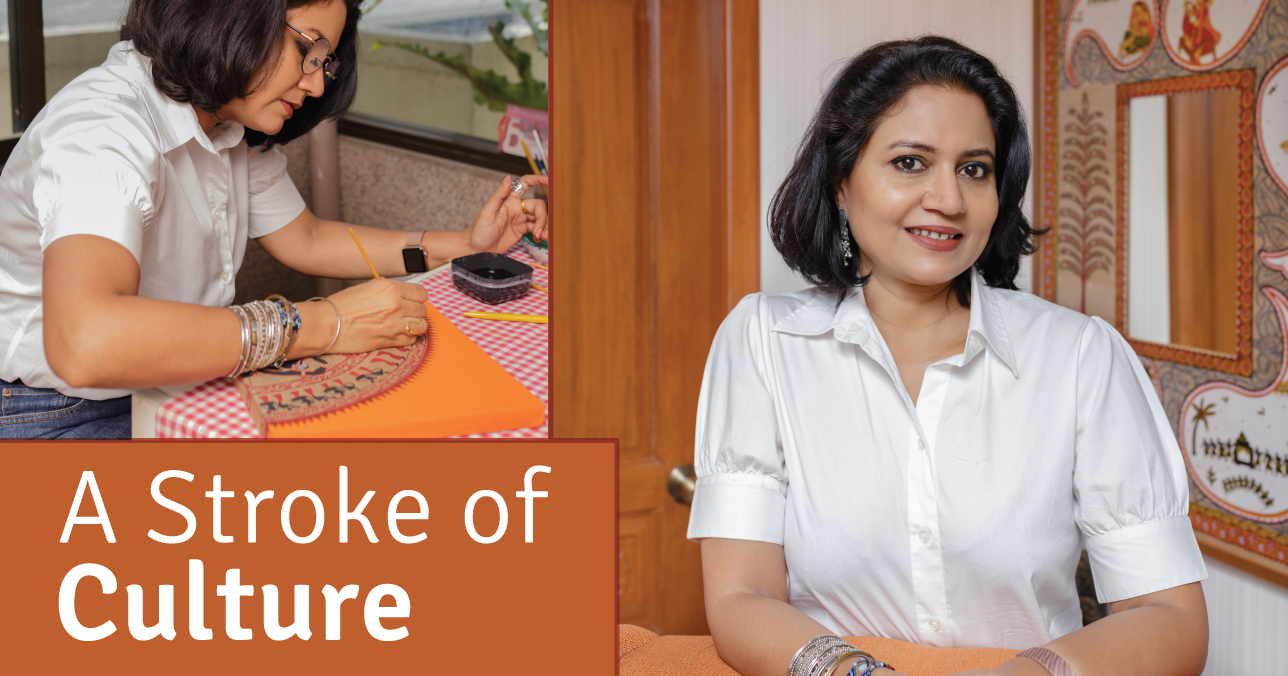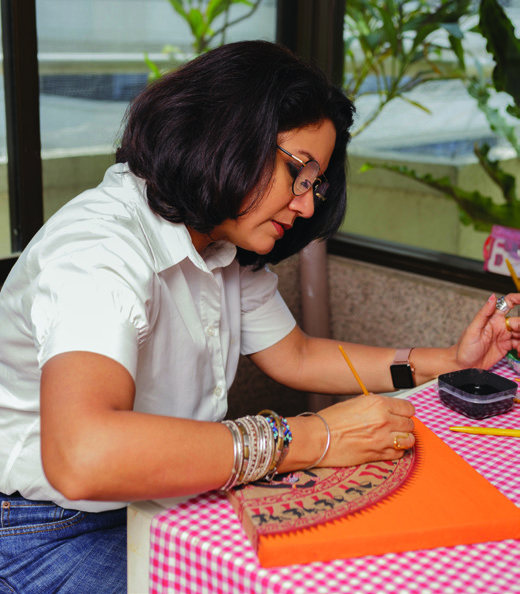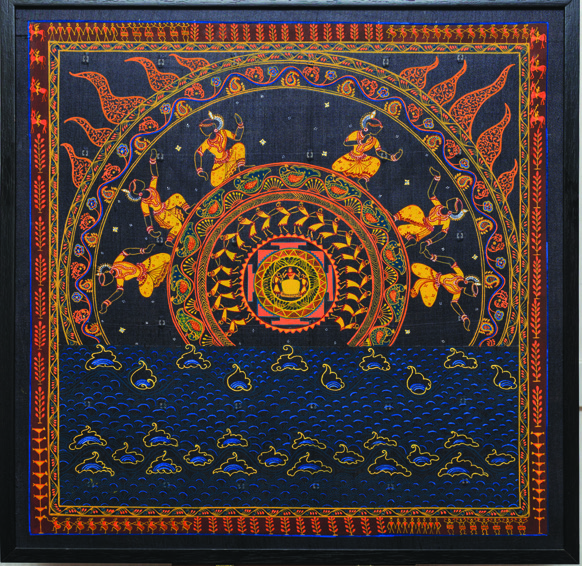Accomplished Odishan artist Neerja Tata continues to keep the ancient Pattachitra craft alive.
By Christy Lau
Filled with a rich cultural history, the Eastern Indian state of Odisha has fascinated visitors for decades. One of the most remarkable heritage arts to originate in this state is Pattachitra, a type of cloth-based scroll painting which uses rich, vibrant colours made from organic vegetables and minerals. Originally used in worship more than 2,000 years ago, the paintings traditionally revolve around stories from the Ramayana and the Mahabharat.
Having spent her childhood and adolescence in Odisha, Neerja Tata was exposed to Pattachitra from an early age, although her interest in the art did not start until after she graduated university and got married. A chance visit to the art school near her home lit the spark for her lifelong passion, which is still burning brightly more than two decades later.
Since her very first fundraising exhibition in 1996, which was held to support victims of the 1993 Latur earthquake, she has taken part in a series of solo and joint exhibitions in Delhi, Bangkok and New York. Here in the bustling Thai capital, she has worked closely with the Indian Cultural Centre since 2009, gaining a solid reputation as a talented painter who skilfully carries on the traditions of her forefathers, proudly sharing her home state’s wonderful artistic gift with the world.
Currently hosting her fourth solo exhibition entitled Circles in Motion Mandalas at The Studio at Supalai Place until May 4th, 49-year-old Neerja sets aside some time to share her creative journey.
Tell us about your current exhibition called Circles in Motion Mandalas. Why did you choose this particular theme?
I was inspired by my niece, who is an Odissi dancer. When I watched her perform this classical style for the first time, I got very emotional. I wanted to showcase the postures of the Odissi dance and Saura tribe, both famous Odishan legacies, and incorporate mandalas into the collection, as mandalas are essentially circles that symbolise constant motion. That’s why I named the collection ‘Circles in Motion,’ because it’s all about movement.
Can you tell us a bit more about your background and how your passion for Pattachitra art began?
After completing my Master’s in psychology at the University of Delhi, I got married and moved back to Odisha after a year, due to my husband’s work with the UN. Soon afterwards, I had my eldest son, and was unable to work full-time, so I thought I’d try my hand at learning art as a hobby. One day I happened to walk into the now closed Chinmayee art school near my home and saw all the students painting these beautiful, colourful pictures. This was the moment I realised what I wanted to do.
What was the turning point that prompted you to take a more contemporary route with Pattachitra art?
In 1996, I was requested to showcase my paintings at a fundraising exhibition to support victims of the 1993 Latur earthquake. Up until that point, my work revolved around religious myths, as is the Pattachitra tradition. However, for this exhibition, I was asked to create works celebrating the strength of these women who rose from this disaster. That was when I realised that I could go beyond tradition, so I gradually developed my own style, adding more modern themes and motifs into my pieces.
Traditionally, Pattachitra art uses cotton as the canvas. Why do you use silk as your medium?
Both cotton and silk are acceptable mediums for Pattachitra, but I prefer silk because I make my own canvases, and this allows me more flexibility on my painting sizes. I also love working on silk because it’s very graceful. There is a certain texture which gives it a unique, ethnic look.
How do you create a silk canvas?
First, I soak the silk in water to release any excess starchiness. Next, I make a paste from tapioca starch, which I spread onto the silk, before mounting the cloth on a wooden frame. Then I leave it to dry outside in the sun, and once the silk has hardened, it’s ready to use.
What are some of the rules of the Pattachitra art form?
Pattachitra has a distinct style, so plants, animals and human figures have to be drawn a certain way. A crucial guideline is that every painting must have a border which contains floral and animal motifs. You must also avoid any empty spaces on the canvas. So any blank space which remains after you finish the painting must be filled with small patterns.
Do you make your own colours for your painting?
I buy the pigments from Odisha and prepare the colours at home. The main hues are white, black, yellow, red and green. White comes from conch shells; black is made from lamp soot; yellow is made from a harikala stone; red comes from a mineral colour called hingula; and green is usually made with neem leaves.
Do you have a specific creative process?
I need a quiet environment to focus, so I don’t paint on the weekends or when my family is home. To get started on a new painting, I put on some soft instrumental music and just let my imagination flow. Once I start, I can paint the whole day without any distractions.
How long does it take to finish one painting?
A small one would take about a week, and a larger painting could take me up to three weeks.
What are you hoping to achieve creatively in the next few years?
As an artist, I feel it’s important to grow and constantly try new things. Every day is a learning experience. I just hope to keep perfecting my art and sharing it with people.
Neerja Tata’s exhibition will be on display until May 4th at The Studio at Supalai Place, from 10am to 5pm. For more information, please call 091 484 9832 or email neerja.tata@gmail.com








